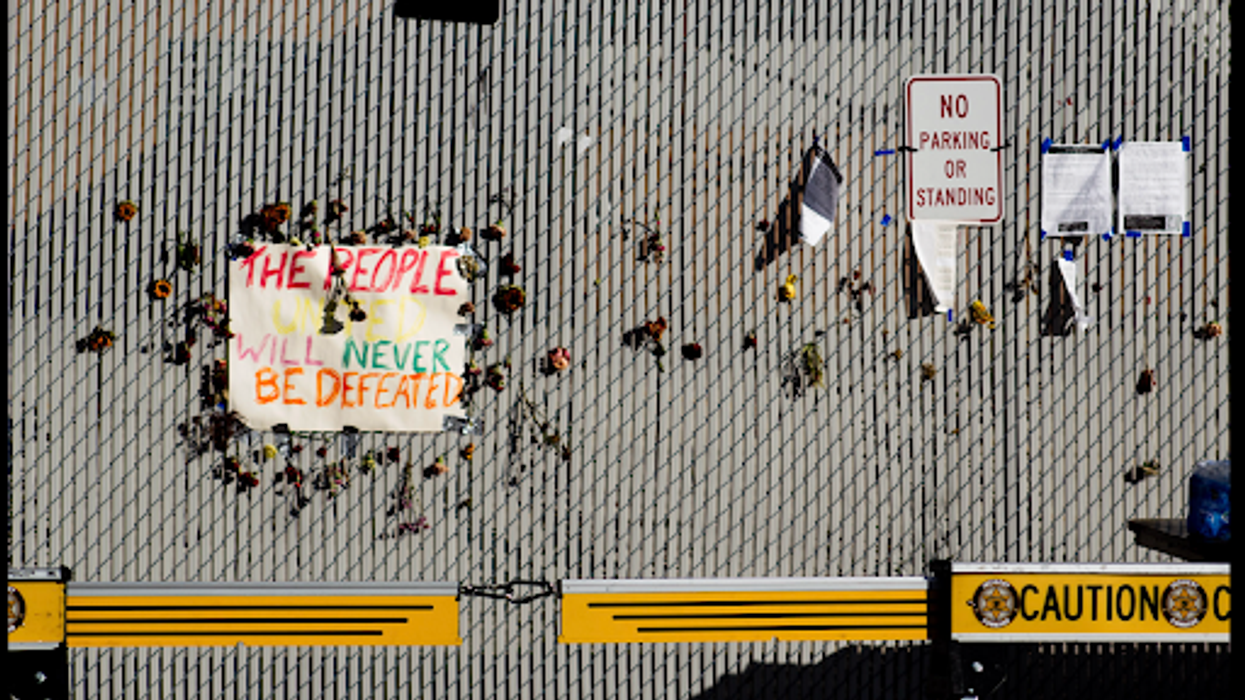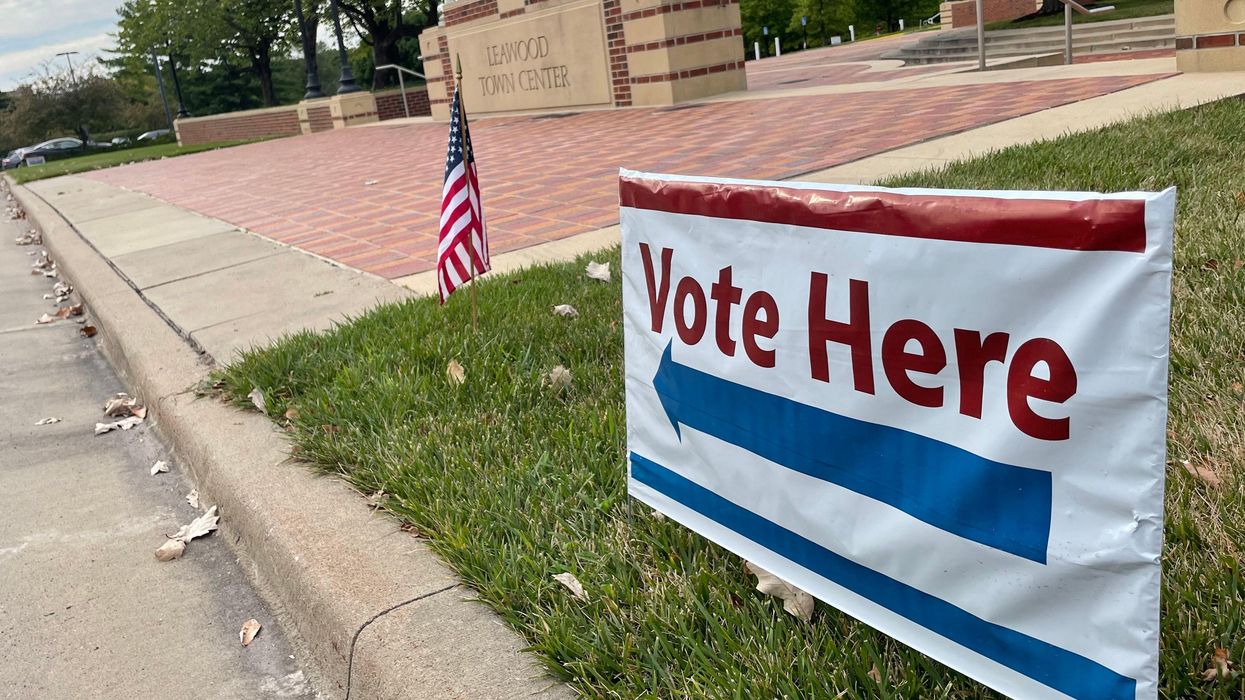The ongoing U.S. Immigration and Customs Enforcement raids have created widespread panic and confusion across Chicago. Many of the city’s immigrant communities are hurting, and if you’ve found yourself asking “how can I help?”, you’re far from the only one.
“Every single one [U.S. resident] has constitutional rights regardless of their immigration status. And the community needs to know that. And when we allow those rights to be taken away from some, we risk that they're going to take all those rights from everyone. So we all need to feel compelled and concerned when we see that these rights are being stripped away from, right now, a group of people, because it will be just a matter of time for one of us to be the next target,” said Enrique Espinoza, an immigrant attorney at Chicago Kent College of Law.
In Chicago, across the Midwest, and throughout the country, one of the primary ways to support impacted communities continues to be both physical and online advocacy and presence. This involves participating in demonstrations and protests, sharing verified information online from reputable organizations such as the American Civil Liberties Union or, in Illinois, the Illinois Coalition for Immigrant and Refugee Rights, or volunteering with organizations like MigraWatch or Know Your Rights. However, in-person activism comes with real risk.
 Protest signs and resource information posters were hung up around a resource tent in Broadview, Illinois. Credit: Britton Struthers-Lugo, Oct. 30, 2025.
Protest signs and resource information posters were hung up around a resource tent in Broadview, Illinois. Credit: Britton Struthers-Lugo, Oct. 30, 2025.
"While the Know Your Rights training are focusing on what the immigrants need to know, it's important that also citizens figure that out: what are within the boundaries of the constitutional law that they can do without putting themselves at danger," said Espinoza.
Illinois State Sen. Guzmán, 20th District, Sen. Guzmán agrees with the importance of building a deep understanding of our constitutional rights. If citizens know the law, then it’s easier to identify right from wrong.
“It's very, very important for all of us to collectively recognize that the atrocities that we are seeing, whether it is the forced kidnapping and detainment of our community members, to the violence that is being enacted on people's bodies, to the use of tear gas and rubber bullets, like, none of these things are normal nor okay,” said Guzman. “If nothing else, we have all the collective role in pushing back against the efforts to send us into further forms of fascism.”
At the forefront of such collective action is the Broadview U.S. Immigration and Customs Enforcement Facility, which has been making headlines for several months. Located just past Chicago’s western neighborhoods, the Broadview ICE Facility has seen a surge of violence following protestors’ confrontations with federal enforcement agents.
Activist, protestor, and volunteer Mike Granzow has been outside the Broadview facility for over a month and has shared his experience there following the announcement of Operation Midnight Blitz in early September.
“Immediately, there were protesters outside of that building,” Mike said. “As this protest grew, ICE introduced chemical weapons to all of our lives. It means rubber bullets. Foam bullets.”
Fellow volunteer and protestor, Bryan Brannon, who travels to Broadview from Evanston, also shared his experience:
“I got lit up pretty bad with pepper balls on my back. In the morning, I got pepper-sprayed in the face.”
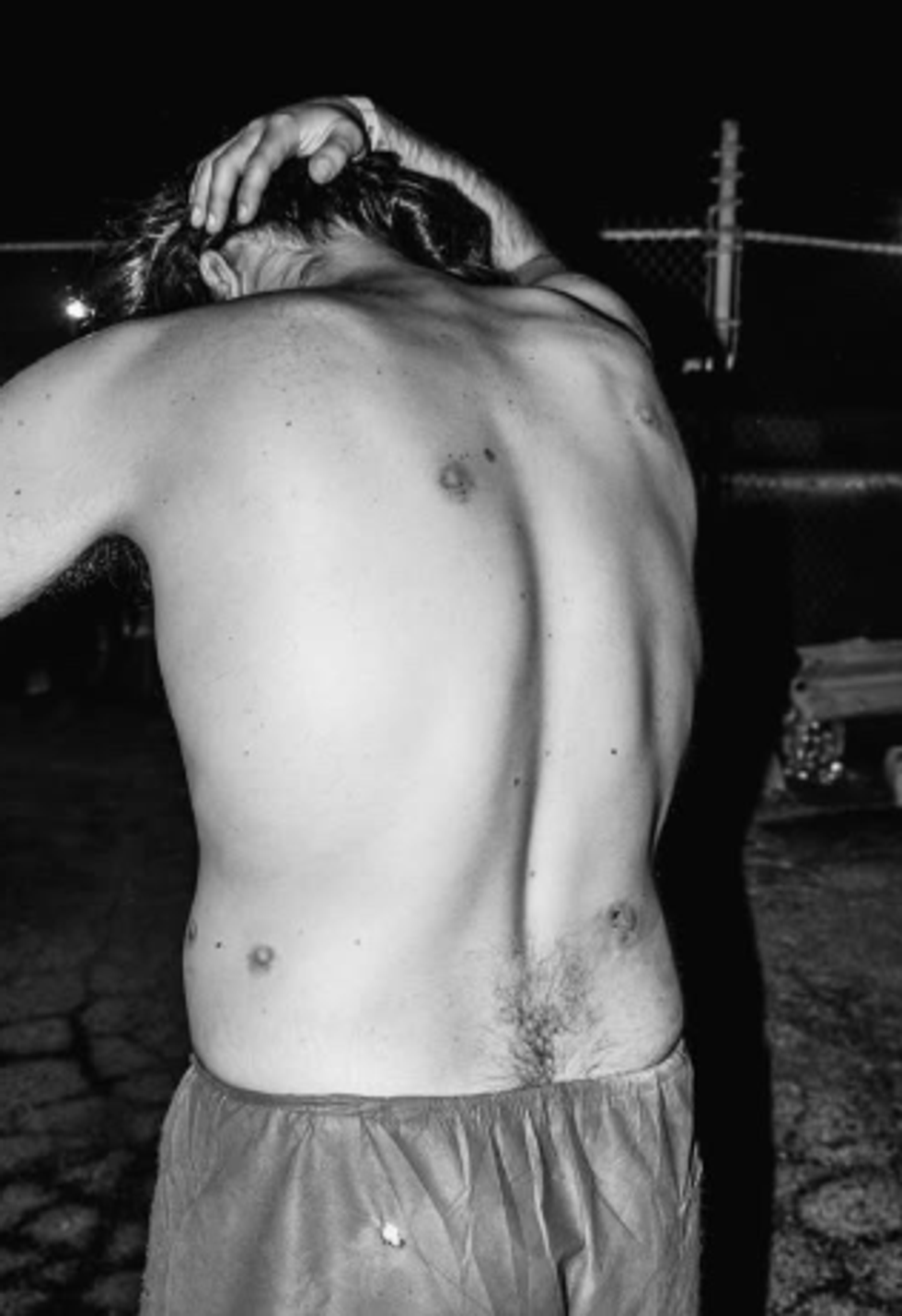 Rubber bullet wounds on Bryan’s back, after a day of protesting at the Broadview ICE facility in mid-September. He wears hospital scrubs, acquired after receiving medical attention following the pepper-spray incident earlier in the day. He returned to protest after being discharged from the hospital.Credit: Adriano Kalin (@adriano_kalin).
Rubber bullet wounds on Bryan’s back, after a day of protesting at the Broadview ICE facility in mid-September. He wears hospital scrubs, acquired after receiving medical attention following the pepper-spray incident earlier in the day. He returned to protest after being discharged from the hospital.Credit: Adriano Kalin (@adriano_kalin).
“Before they pepper-sprayed me in the face, it was their words, not mine: they said, ‘Fuck you and your mother.’ And then they pepper-sprayed me in the face.” Brannon said. “I was no threat to them. I don't see why they had to pepper-spray me and why they had to say, ‘Fuck you and your mother.’ It seemed all very over the top, and it does not seem like the way that a law officer should be acting.”
In response to the violence, both Granzow and Brannon worked to gather materials at the supply tent to provide protective gear to protestors, as well as increased medical supplies and aid. There were also overnight volunteers in the tent who offered around-the-clock support to detainee family members. Unfortunately, the medical supply tent was taken down in late October after the City of Broadview issued an evacuation order due to a camping violation. However, the testimonies of protesters and volunteers outside the detention center highlight the power of physical presence and the consequences some have faced for exercising their First Amendment rights.
“What we have seen, even with individuals that are acting within the boundaries on the law, they are being retaliated [against], and they need to know what are the things that, in fact, are allowed, such as recording, document and share, and what are the things that are not allowed, such as obstructing an officer or impeding them carry on with what they sometimes call it a targeted operations,” said Espinoza.
Recording, documenting, and sharing information - especially about ICE activity in public spaces - remains one of the most effective and accessible forms of activism. Guzmán refers to this as “rapid response”:
“When we're talking about rapid response, we're talking about the practice of organized neighbors using organized time and organized tactics to disrupt what is happening in ICE through documentation.”
In Illinois, bystanders are legally permitted to record officers in public areas such as streets, sidewalks, and parks. Video evidence can be instrumental in determining whether officers are following lawful procedure, shedding light on misconduct, and creating a public record of an agent's behavior. According to Guzmán, organizations such as the National Immigration Justice Center have already used community-provided evidence to inform consent decrees and other court-based actions. Espinoza offers guidance on filming safely.
- “Focus on the whole scenario so that you can see how many agents are there and whether they are armed, and whether they're wearing face masks because a judge instructed not to do so. Unless it is an undercover operation, which the regular raids that they're doing on the streets are not undercover operations.”
- “People can and should ask, where is the warrant? 99% of the time, they won't show it to you. But it is important because a judge clearly says, you cannot stop someone without a warrant and/or probable cause. So the importance of that question is to demonstrate whether they do have, in fact, a warrant. Because if they don't have a warrant, then one might perceive that as being a racially profiling detention and trying to focus on recording the uniform that they're wearing.”
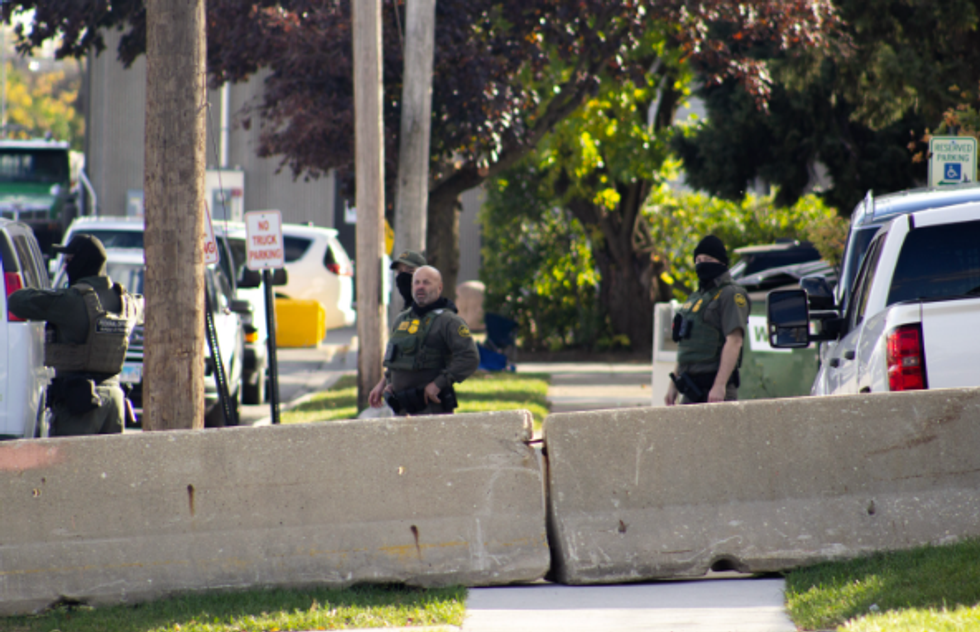 ICE officers gathered outside the Broadview detention center. Yellow identifying badges can be seen on the front of their uniforms and on their shoulders. Credit: Britton Struthers-Lugo, Oct. 30, 2025.
ICE officers gathered outside the Broadview detention center. Yellow identifying badges can be seen on the front of their uniforms and on their shoulders. Credit: Britton Struthers-Lugo, Oct. 30, 2025.
He also recommends capturing the officer’s identifying markers - usually located on an agent’s shoulders - which will show their rank. The SALUTE acronym is another easy way to remember how to document and report ICE activity.
 Screengrab from the Chicago Council of Lawyers. Designed by Megan Piontkowski, Oct. 2025.
Screengrab from the Chicago Council of Lawyers. Designed by Megan Piontkowski, Oct. 2025.
It is important to remember to maintain a safe physical distance in all interactions with law enforcement agents. Getting in an officer’s way is likely to be considered obstruction and may result in physical force or arrest. However, what should you do if an officer approaches you?
“So the recommendation at that point is clearly, say it on the video: ‘You're coming into my space. I am not impeding nor obstructing your job. You are the one coming up to me.’ Because what they're going to try to twist it so that you are the one blocking them. But the videos have shown that they are the ones that are sometimes instigating and trying to get people upset to react, and then having an excuse of doing or using excessive force,” says Espinoza. “If their rights are violated, they can present a lawsuit against them, the agency, and the individuals. And that will be the only way that these things will be deterred, if not stopped completely.”
Interactions with ICE agents can be reported to the Illinois Coalition for Immigration and Refugee Rights via their hotline at 855-435-7693 or to various media outlets, such as the Chicago Journalists Collaborative.
Of course, direct action isn’t the only option. Many people cannot afford to undertake the risks inherent in physical activism and prefer to support from a distance, such as by providing financial assistance. Monetary aid is helpful at any increment, and might look like purchasing groceries for a struggling family, contributing to a GoFundMe, donating toward legal representation, or covering rent for someone whose primary earner was detained.
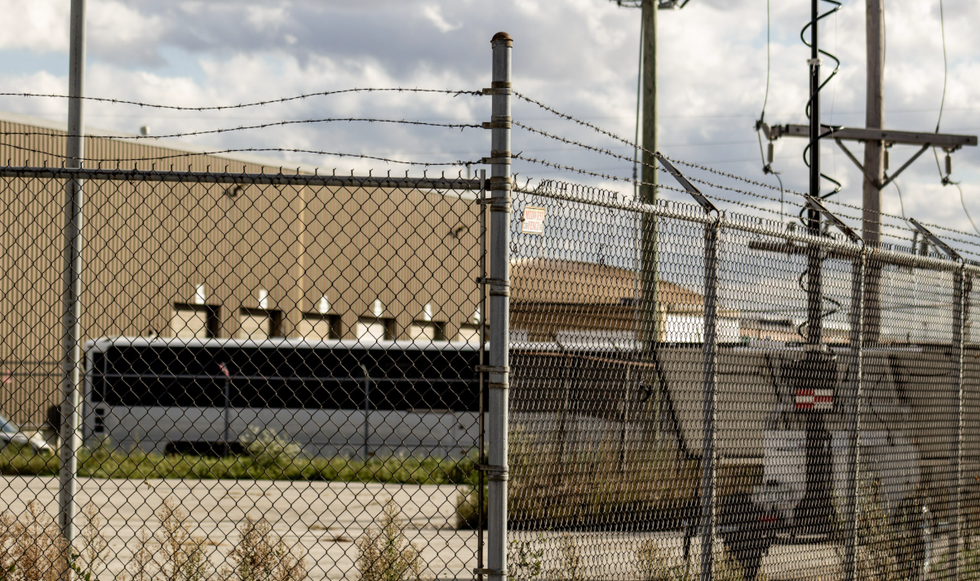 A white bus waits outside the Broadview Detention Center to transport detainees to a permanent detention center or to an airport. The Broadview Detention Center cannot hold detainees for longer than 12 hours, though to reflect increased enforcement operations this has been increased to 72 hours. Longer stays have been recorded since Operation Midway Blitz. Credit: By Britton Struthers-Lugo, Oct. 30, 2025.
A white bus waits outside the Broadview Detention Center to transport detainees to a permanent detention center or to an airport. The Broadview Detention Center cannot hold detainees for longer than 12 hours, though to reflect increased enforcement operations this has been increased to 72 hours. Longer stays have been recorded since Operation Midway Blitz. Credit: By Britton Struthers-Lugo, Oct. 30, 2025.
Michael Rodriguez, Chicago’s 26th Ward Alderman, has seen firsthand the financial devastation ICE raids have caused in his community.
“Individuals who've been detained, their families tend to be in dire straits. Often, people are taken during their work hours. Either they're food vendors, they're working in construction, and those family members of those individuals are largely reliant on the income that their family members were making,” said Rodriguez.
According to Alderman Rodriguez, businesses in the Little Village neighborhood have taken a significant economic hit, with sales dropping 50%- 60% since ICE arrived in the area. The Little Village Chamber of Commerce reported that some businesses in the neighborhood have experienced a sales loss of up to 70%. Supporting local vendors, businesses, and food pantries in heavily impacted neighborhoods, such as Little Village, can help families weather the economic devastation that increased immigration activity has brought.
Finally, one of the most meaningful ways to help is also one of the simplest: staying present and staying vocal within your own community.
 A paper outlining resources and ways to report federal law enforcement activity around Chicago hangs on a gate in the protestor “free speech zone”.Credit: Britton Struthers-Lugo. Oct. 30, 2025.
A paper outlining resources and ways to report federal law enforcement activity around Chicago hangs on a gate in the protestor “free speech zone”.Credit: Britton Struthers-Lugo. Oct. 30, 2025.
A paper outlining resources and ways to report federal law enforcement activity around Chicago hangs on a gate in the protesters' “free speech zone”. By Britton Struthers-Lugo. Oct. 30, 2025.
“All of us have neighbors who are at risk, who are undocumented. I don't care what city in Illinois, what region you are in, the Midwest, what neighborhood you live in, or what block you live on. In Chicago, you've got a neighbor or two who are either undocumented or maybe even legal permanent residents who don't feel safe to go to school, to go to work, or to take their or to go to worship,” says Rodriguez. “It's challenging right now. So just check in on your neighbors and offer them a word of advice.”
Despite reports that ICE activity in Chicago is dying down, collective action continues.
“We're going to continue organizing as if ICE and border patrol will ramp up their efforts.” said Guzmán, “So I encourage folks that have felt like, ooh, like I should have gotten involved and I didn't and it's too late. No, it's not too late. This is a perfect time actually to get connected with community organizations with rapid response and get trained and find, you know, what you want your place to be. Because we need to continue growing the base of neighbors that is doing this work to protect all of us.”
In moments like this, community becomes our strongest resource. Standing with our neighbors, sharing information, providing financial or resource assistance, and refusing to look away can make a real difference. Chicago has faced difficult moments before, but it is collective care - not fear - that has carried the city through.
Britton Struthers-Lugo is a freelance journalist and a photographer based in Chicago, Illinois.





